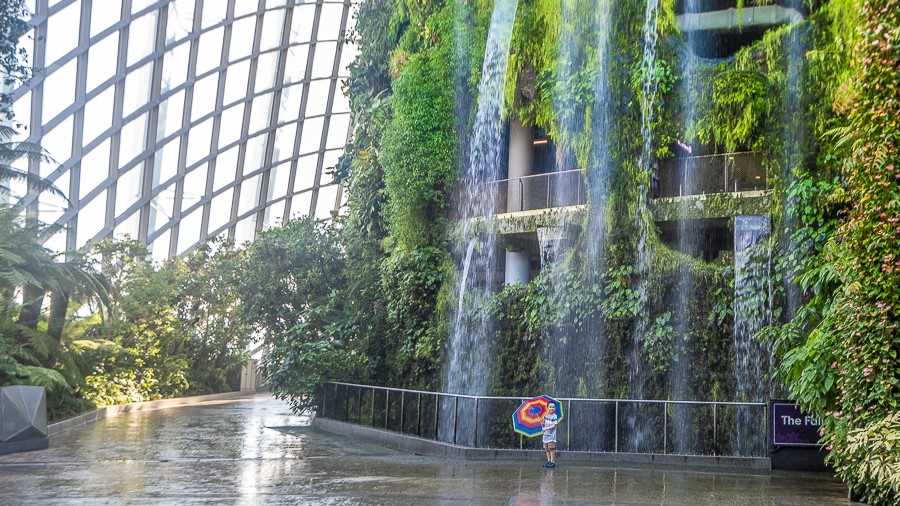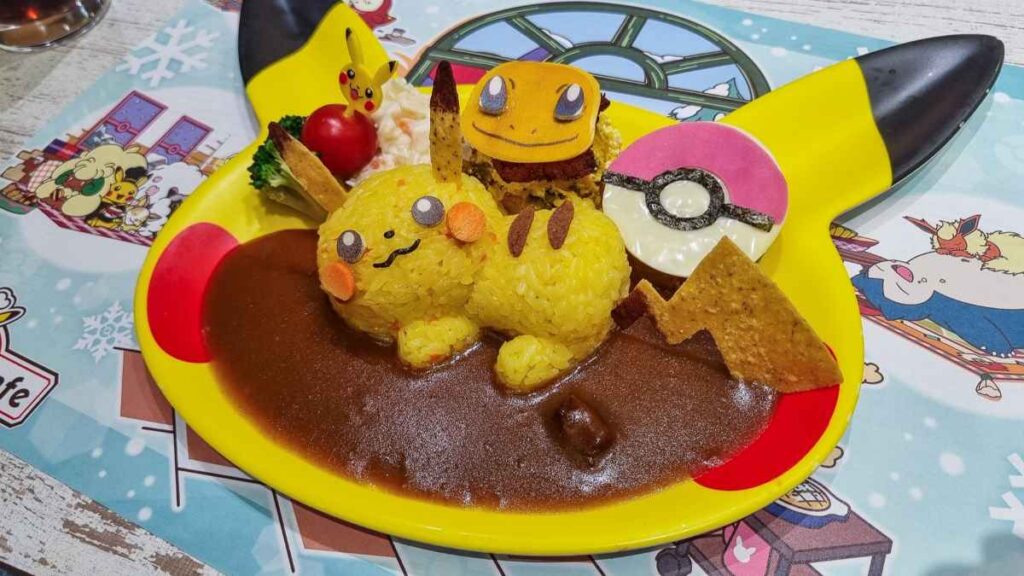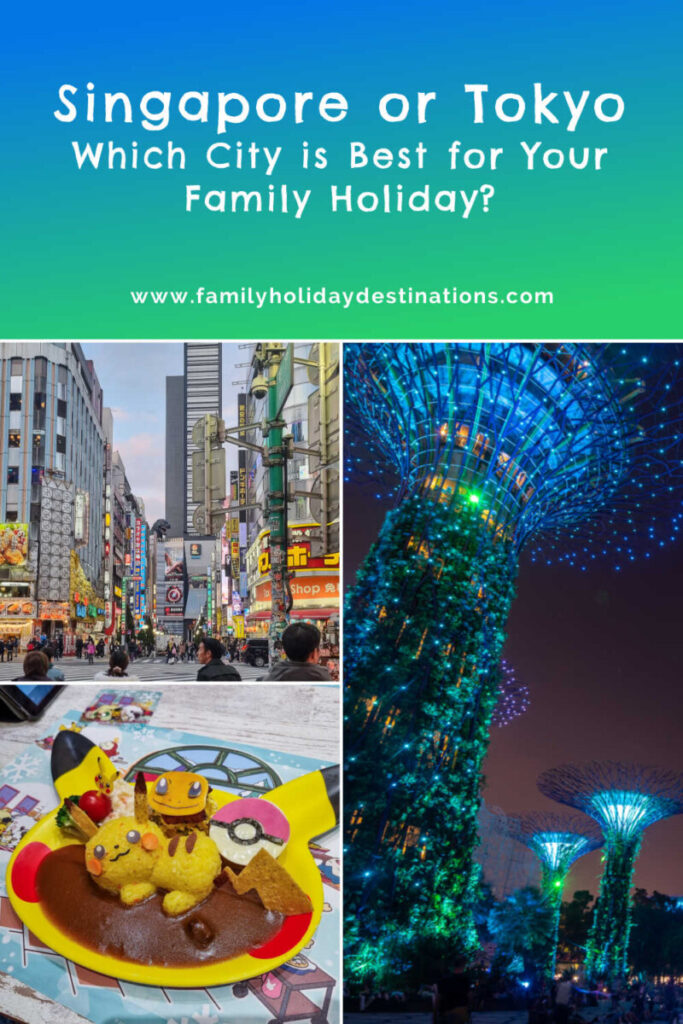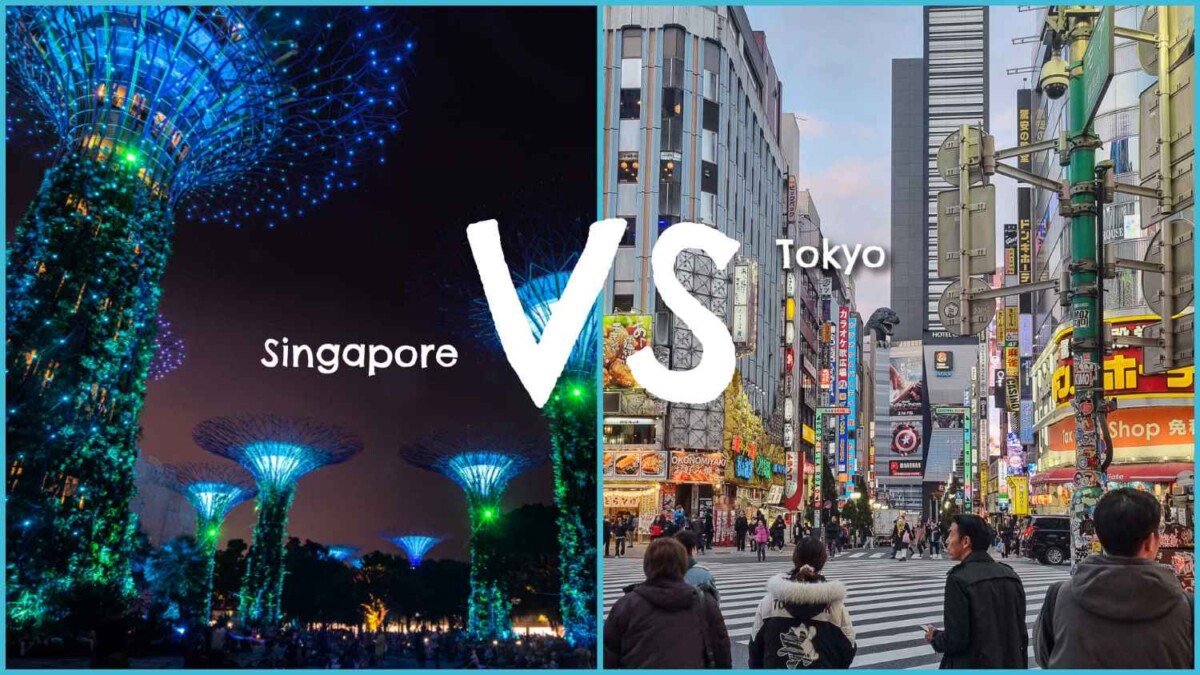If you’re torn between Singapore orTokyo (Japan) for your next family holiday, you’re in for a tough decision. Both cities are clean, modern, family-friendly, and absolutely packed with things to do. They’re also wildly different in vibe. Singapore boasts tropical warmth and lush gardens, while Tokyo’s neon streets, quirky cafés, and century-old temples compete for the win. So how do you choose? We’ve broken it down so you can decide which city suits your family best.
Singapore vs Tokyo at a glance
| Feature | Singapore | Tokyo |
|---|---|---|
| Weather | Hot & humid year-round | Four seasons – cherry blossoms in spring, autumn leaves in fall |
| Flight times (approximately) | Brisbane – 8 hours 5 minutes Sydney – 8 hours 25 minutes Perth – 5 hours 25 minutes Los Angeles – 17 hours London – 13 hours 15 minutes | Brisbane – 9 hours 15 minutes Sydney – 9 hours 55 minutes Perth – 9 hours 40 minutes Los Angeles – 11 hours 20 minutes London – 13 hours 50 minutes |
| Ease of getting around | Very simple MRT system. Efficient and runs on time. | Huge train network, can be confusing at first but very efficient and runs on time. |
| Family attractions | Gardens by the Bay, Sentosa Island, Singapore Zoo & Night Safari | Tokyo Disneyland & DisneySea, TeamLab, Shibuya Sky, Ueno Zoo |
| Food | Hawker centres – cheap, varied, and very clean | More novelty options and convenience stores offer cheap yet delicious options |
| Cost | Flights & attractions are often cheaper with more free options | Airfares are higher, but a wide range of dining & accommodation |
| Vibe | Sleek, green, tropical | Fast-paced, neon-lit, rich in tradition |
| Best for | Families wanting easy travel & warm weather | Families wanting adventure, culture, & seasonal beauty |
Quick verdict: Singapore is your go-to for tropical ease and compact exploring, while Tokyo offers endless variety and cultural surprises. Honestly, you can’t go wrong with either.

Weather & best time to visit
Singapore: Located just 137km north of the equator, Singapore is hot and humid year-round with average temperatures around 30°C. You can expect sudden downpours, but they’re usually short-lived. The good news? There’s no “bad” time to visit – pack light clothes, sunscreen, and an umbrella, and you’re set.
Tokyo: Tokyo has four distinct seasons. Spring (March–May) brings cherry blossoms, summer (June–August) is hot and humid, autumn (September–November) offers crisp air and fiery leaves, and winter (December–February) can be cold but clear. If you’re chasing cherry blossoms or autumn foliage, Tokyo’s your winner.
Winner for weather? It’s a tie. It depends if you want consistent warmth (Singapore) or seasonal variety (Tokyo).
Getting around Singapore vs Tokyo
Singapore: Public transport here is cheap, clean, and incredibly easy to use. The MRT system connects all major attractions, and rides rarely take more than 30 minutes. Taxis are affordable too.
Tokyo: Tokyo’s rail network is legendary – efficient, safe, and punctual to the second. The downside? It can feel like a spaghetti bowl of lines at first. Once you get the hang of it, you’ll be zipping across the city with ease.
Winner for transport? Singapore for simplicity, Tokyo for sheer scale and reach.
Family-friendly attractions
Singapore: Towering Supertrees and Cloud Forest/Flower Dome at Gardens by the Bay, beaches at Sentosa Island, Universal Studios Singapore, S.E.A. Aquarium, immersive animal encounters at Singapore Zoo and free play spaces made for kids at Jacob Ballas Children’s Garden.
Tokyo: World-class theme parks at Tokyo Disneyland & DisneySea, interactive digital art experiences at TeamLab Planets & Borderless, culture and critters at Ueno Zoo & Museums and city views that will wow kids and adults alike at Shibuya Sky & Tokyo Tower.
Winner for attractions: It’s a tie. Singapore is compact with attractions close together, while Tokyo’s offerings are more varied but spread out.

Food scene
Singapore: Hawker centres are a dream for families – cheap, tasty, and full of variety. From chicken rice to satay, everyone can find something. Cleanliness is top-notch, and queues usually mean great food.
Tokyo: Food here is both art and comfort. Sushi, ramen, tempura, fluffy pancakes, insta-worthy desserts… the list goes on. Even convenience store snacks are next level. Picky eaters may find more familiar flavours in Singapore, but Tokyo has endless delicious options.
Winner for food? Foodies will lean towards Tokyo, but for quick, cheap variety, Singapore wins.
Cost
Singapore: Flights from Australia are shorter and often cheaper… but not by much. Accommodation can be pricey, but eating at hawker centres keeps costs down. Attractions are fairly affordable with a number of free options.
Tokyo: Longer flights and bigger airfare costs (unless you time it right). Accommodation is also pricey but there is a wide range – from capsule hotels to luxury stays. Dining can be budget-friendly if you stick to convenience stores, noodle shops and bakeries, but it’s easy to splurge.
Winner for budget? Singapore – especially if you’re flying from Australia.
Overall vibe
Singapore: Sleek, green, tropical, and incredibly easy to navigate. Perfect for families wanting a stress-free city break.
Tokyo: Fast-paced, endlessly fascinating, and bursting with contrasts – skyscrapers beside shrines, robots alongside ramen stalls. Ideal for adventurous families.
Final verdict – Singapore or Tokyo?
If you’re looking for easy travel, tropical weather, and attractions close together, Singapore might be your pick… particularly if your kids are quite young and won’t quite appreciate Japan’s quirky subcultures yet. If you want culture shocks, clean public toilets that require Google Translate to operate, seasonal beauty, and endless things to explore, Tokyo will keep you coming back. Honestly? You can’t lose with either choice. Maybe just flip a coin or plan to do both.

FAQ – Singapore or Tokyo
Both cities are extremely family-friendly. Singapore wins for ease and compactness, while Tokyo offers more variety and cultural experiences.
Generally, Singapore is cheaper for flights from Australia and has budget-friendly hawker centre dining. Tokyo can be done cheaply with the right choices but tends to cost more overall.
Singapore is warm year-round, while Tokyo offers distinct seasons including cherry blossoms and autumn leaves.
Both have incredible food scenes. Singapore offers cheap, diverse meals at hawker centres, while Tokyo delivers high-quality Japanese cuisine and quirky snacks.
Yes! Many travellers combine them with a flight time of around 7 hours in between, but each city deserves at least 4–5 days on its own.
Singapore’s transport system is smaller and more straightforward, making it easier for families to navigate. Tokyo’s network is huge and efficient but can be confusing at first.
Both have plenty, but Singapore’s attractions like Gardens by the Bay’s domes, ArtScience Museum, and shopping malls are well air-conditioned and rain-friendly. Tokyo’s indoor options include TeamLab exhibits, aquariums, museums, and themed cafés.
Singapore is perfect for a short stay thanks to its size and close proximity of attractions. Tokyo works better for a longer trip unless you’ve been before and know exactly where you want to go.
Tokyo takes the win here, with its mix of ancient shrines, hyper-modern districts, and quirky subcultures. Singapore is culturally rich too, but feels more familiar to many Western travellers.
This article contains affiliate links to products. We may receive a commission for purchases made through these links.
Where to next?


Let me know what you think!